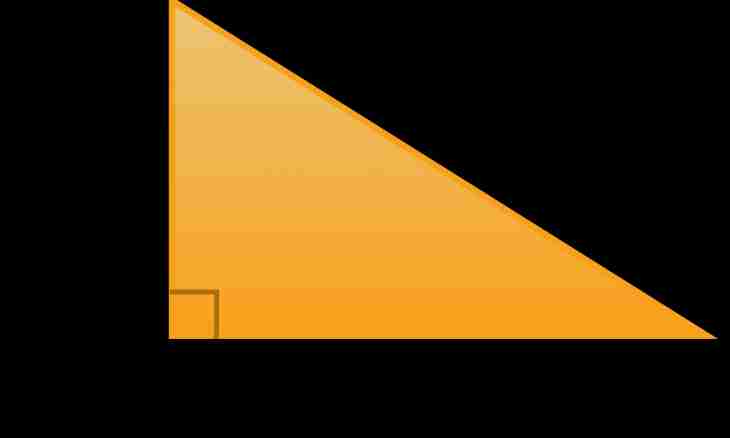In a triangle, corner size in one of tops of which is equal 90 °, the long party is called a hypotenuse, and other two - legs. Such figure it is possible to present as a half of the rectangle divided by diagonal. It means, as the area it has to be equal to a half of the area of a rectangle which parties coincide with legs. A little more difficult task is calculation of the area on legs of the triangle set by coordinates of the tops.
Instruction
1. If lengths of legs (an and b) a rectangular triangle are given in statements of the problem in an explicit form, the formula of calculation of the area (S) of a figure will be very simple - multiply these two sizes, and halve the received result: S = ½*a*b. For example, if lengths of two short parties of such triangle are 30 cm and 50 cm, its area has to be equal ½*30*50 = 750 cm².
2. If the triangle is placed in a two-dimensional orthogonal coordinate system and B (X ₂, Y ₂) and C is set by coordinates of the tops of A (X ₁, Y ₁) (X ₃, Y ₃), begin with calculation of lengths of legs. For this purpose consider the triangles made of each party and two of its projection to coordinate axes. The fact that these axes are perpendicular allows to find length of the party on Pythagorean theorem as it is a hypotenuse in such auxiliary triangle. Find lengths of projections of the party (legs of an auxiliary triangle) subtraction of the corresponding coordinates of the points forming the party. Lengths of the party have to be equal to |AB| = √ ((X -X ₂)²+ (Y -Y ₂)²), |BC| = √ ((X -X ₃)²+ (Y -Y ₃)²), |CA| = √ ((X -X ₁)²+ (Y -Y ₁)²).
3. Determine which couple of parties is legs - it can be done on their lengths received on the previous step. Legs are obliged to be shorter than a hypotenuse. Then use a formula from the first step - find a half of the work of the calculated sizes. Provided that legs are the parties of AB and BC, in a general view the formula can be written down so: S = ½ * (√ ((X -X ₂)²+ (Y -Y ₂)²) * √ ((X -X ₃)²+ (Y -Y ₃)²).
4. If the rectangular triangle is placed in the three-dimensional system of coordinates, the sequence of operations will not change. Just add the third coordinates of the corresponding points to formulas of calculation of lengths of the parties: |AB| = √ ((X -X ₂)² + (Y -Y ₂)² + (Z -Z ₂)²), |BC| = √ ((X -X ₃)²+ (Y -Y ₃)²+ (Z -Z ₃)²), |CA| = √ ((X -X ₁)²+ (Y -Y ₁)²+ (Z -Z ₁)²). The final formula in this case has to look so: S = ½ * (√ ((X -X ₂)²+ (Y -Y ₂)²+ (Z -Z ₂)²) * √ ((X -X ₃)²+ (Y -Y ₃)²+ (Z -Z ₃)²).

